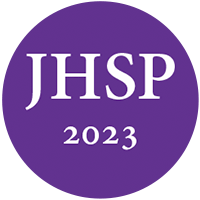The professional home for health service psychologists.
Join a community of 15,000 psychologists and trainees.
Learn it today. Apply it tomorrow.
Connecting you to what you need in your career.
Making a difference.
Swan, A., & Carpenter, J. (2018). Assessing and treating sleep difficulties in anxious children and adolescents. Journal of Health Service Psychology, 44, 7–13.
Ten percent of children experience anxiety disorders, and the majority of them also have sleep-related problems. A multi-step process is recommended to help children and adolescents with anxiety achieve independent and sufficient sleep, which includes 1) establishing good sleep hygiene to set the stage for quality sleep, 2) using cognitive behavioral therapy with exposures to help children and adolescents learn to manage anxiety that interferes with sleep, 3) using behavioral sleep interventions to address poor sleep onset associations and other sleep specific concerns, and 4) tailoring interventions throughout treatment to match caregiver and child needs. Parent guidance and training is essential to help change maladaptive sleeping patterns.
Alfano, C. A., Ginsburg, G. S., & Kingery, J. N. (2007). Sleep-Related Problems Among Children and Adolescents With Anxiety Disorders. Journal of the American Academy of Child & Adolescent Psychiatry, 46(2), 224–232. https://doi.org/10.1097/01.chi.0000242233.06011.8e
Brand, S., Gerber, M., Beck, J., Hatzinger, M., P?hse, U., & Holsboer-Trachsler, E. (2010). High Exercise Levels Are Related to Favorable Sleep Patterns and Psychological Functioning in Adolescents: A Comparison of Athletes and Controls. Journal of Adolescent Health, 46(2), 133–141. https://doi.org/10.1016/j.jadohealth.2009.06.018
Buysse, D. J., Ancoli-Israel, S., Edinger, J. D., Lichstein, K. L., & Morin, C. M. (2006). Recommendations for a Standard Research Assessment of Insomnia. Sleep, 29(9), 1155–1173. https://doi.org/10.1093/sleep/29.9.1155
Caporino, N. E., Read, K. L., Shiffrin, N., Settipani, C., Kendall, P. C., Compton, S. N., … Albano, A. M. (2015). Sleep-Related Problems and the Effects of Anxiety Treatment in Children and Adolescents. Journal of Clinical Child & Adolescent Psychology, 1–11. https://doi.org/10.1080/15374416.2015.1063429
Chase, R. M., & Pincus, D. B. (2011). Sleep-Related Problems in Children and Adolescents With Anxiety Disorders. Behavioral Sleep Medicine, 9(4), 224–236. https://doi.org/10.1080/15402002.2011.606768
Costello, J., Egger, H. & Angold, A. (2005). The Developmental Epidemiology of Anxiety Disorders: Phenomenology, Prevalence, and Comorbidity. Child and Adolescent Psychiatric Clinics of North America, 14(4), 631–648.
Figueiro, M. (2016). Delayed sleep phase disorder: clinical perspective with a focus on light therapy. Nature and Science of Sleep, 91. https://doi.org/10.2147/NSS.S85849
Figueiro, M., & Overington, D. (2016). Self-luminous devices and melatonin suppression in adolescents. Lighting Research & Technology, 48(8), 966–975. https://doi.org/10.1177/1477153515584979
Hale, L., & Guan, S. (2015). Screen time and sleep among school-aged children and adolescents: A systematic literature review. Sleep Medicine Reviews, 21, 50–58. https://doi.org/10.1016/j.smrv.2014.07.007
Harsh, J. R., Easley, A., & LeBourgeois, M. K. (2002). A measure of sleep hygiene. Sleep, 25, A316–A317.
Hollon, S. & Beck, A. (2013). Cognitive and Cognitive-Behavioral Therapies. In Handbook of Psychotherapy and Behavior Change(M. J. Lambert, pp. 393–443). Hoboken, NJ, USA: John Wiley & Sons.
Huebner, D. (2008). What to Do when You Dread Your Bed: A Kids Guide to Overcoming
Problems with Sleep. Magination Press.
March, J. S. (1997). Manual for the multidimensional anxiety scale for children (MASC). Toronto: Multi-Health Systems.
March, J. S., Parker, J. D. A., Sullivan, K., Stallings, P., & Conners, C. K. (1997). The Multidimensional Anxiety Scale for Children (MASC): Factor Structure, Reliability, and Validity. Journal of the American Academy of Child & Adolescent Psychiatry, 36(4), 554–565. https://doi.org/10.1097/00004583-199704000-00019
Meltzer, L. J., & Crabtree, V. M. (2015). Pediatric sleep problems: A clinician’s guide to behavioral interventions. Washington, DC: American Psychological Association.
Mindell, J. A., & Owens, J. A. (2015). A clinical guide to pediatric sleep: diagnosis and
management of sleep problems. Lippincott Williams & Wilkins.
Mindell, J. A., Telofski, L. S., Wiegand, B., & Kurtz, E. S. (2009). A Nightly Bedtime Routine: Impact on Sleep in Young Children and Maternal Mood. Sleep, 32(5), 599–606. https://doi.org/10.1093/sleep/32.5.599
Owens, J., Spirito, A., & McGuinn, M. (2000). The Children’s Sleep Habits Questionnaire (CSHQ): Psychometric properties of a survey instrument for school-aged children. SLEEP-NEW YORK, 23(8), 1043–1052.
Paine, S., & Gradisar, M. (2011). A randomised controlled trial of cognitive-behaviour therapy for behavioural insomnia of childhood in school-aged children. Behaviour Research and Therapy, 49(6-7), 379–388. https://doi.org/10.1016/j.brat.2011.03.008
Paruthi, S., Brooks, L. J., Ambrosio, C. D’, Hall, W. A., Kotagal, S., Lloyd, R. M., … Wise, M. S. (2016). Consensus Statement of the American Academy of Sleep Medicine on the Recommended Amount of Sleep for Healthy Children: Methodology and Discussion. Journal of Clinical Sleep Medicine, 12(11), 1549–1561. https://doi.org/10.5664/jcsm.6288
Peterman, J. S., Carper, M. M., Elkins, R. M., Comer, J. S., Pincus, D. B., & Kendall, P. C. (2016). The effects of cognitive-behavioral therapy for youth anxiety on sleep problems. Journal of Anxiety Disorders, 37, 78–88. https://doi.org/10.1016/j.janxdis.2015.11.006
Pincus, D. B., Weiner, C. L., & Friedman, A. G. (2012). Differential Efficacy of Home Monitoring and Cognitive-Behavioral Treatment for Decreasing Children’s Maladaptive Nighttime Fears. Child & Family Behavior Therapy, 34(1), 1–19. https://doi.org/10.1080/07317107.2012.654426
Silverman, W. K., & Albano, A. M. (1996). Silverman WK, Albano AM (1996), The Anxiety Disorders Interview Schedule for Children for DSM-IV: (Child and Parent Versions). San Antonio, TX: Psychological Corporation.
Spence, S. H. (1998). A measure of anxiety symptoms among children. Behaviour Research and Therapy, 36(5), 545–566.
Spence, S. H., Barrett, P. M., & Turner, C. M. (2003). Psychometric properties of the Spence Children’s Anxiety Scale with young adolescents. Journal of Anxiety Disorders, 17(6), 605–625. https://doi.org/10.1016/S0887-6185(02)00236-0
Spence, S. H., & Rapee, R. M. (1999). Preschool anxiety scale (parent report). University of Queensland.
Swan, A. J., & Kendall, P. C. (2016). Fear and Missing Out: Youth Anxiety and Functional Outcomes. Clinical Psychology: Science and Practice, 23(4), 417–435. https://doi.org/10.1111/cpsp.12169
Walkup, J. T., Albano, A. M., Piacentini, J., Birmaher, B., Compton, S. N., Sherrill, J. T., … Kendall, P. C. (2008). Cognitive behavioral therapy, sertraline, or a combination in childhood anxiety. New England Journal of Medicine, 359, 2753–2766. http://doi.org/10.1056/NEJMoa0804633
Copyright © 2025 All rights reserved. National Register of Health Service Psychologists










